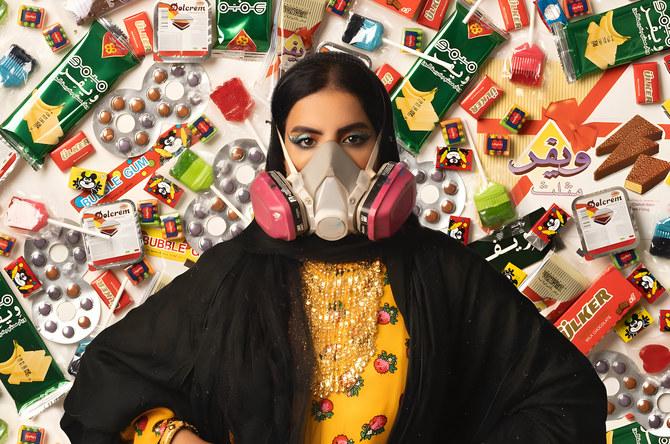In the heart of Tehran, a hidden treasure trove of antique textiles and pen nibs sparked the creative journey of Iranian artist Bita Ghezelayagh. Join us as we delve into 'The Resistance of Pen and Paper' exhibition, where six artists from North Africa and the Middle East use calligraphy and written language to explore profound themes of identity, gender, culture, and displacement.
Preserving the Beauty of Iranian Crafts
Discover the passion and dedication of Bita Ghezelayagh and other artists in preserving the disappearing crafts of Iran.
Iranian artist Bita Ghezelayagh has made it her mission to rescue and upcycle old textiles into works of art. With a keen eye for beauty and potential, she stumbled upon a treasure trove of pen nibs in an antique shop in Tehran. These exquisite nibs, once used for calligraphy, inspired her to create stunning installations and silkscreen-printed calligraphic works.
Ghezelayagh's work is a testament to the resilience of Iranian crafts, which are at risk of being forgotten. Through her art, she not only showcases the beauty of these traditional crafts but also raises awareness about the importance of preserving cultural heritage.
The Resistance of Pen and Paper
Explore the thought-provoking exhibition that brings together artists from North Africa and the Middle East, using calligraphy and written language to reflect on identity, gender politics, cultural heritage, and displacement.
'The Resistance of Pen and Paper' exhibition at the Richard Saltoun Gallery in London's Mayfair showcases the works of six talented artists. Shirin Neshat's photographic series, 'Women of Allah,' challenges Western perceptions of femininity in relation to Islamic fundamentalism and militancy in Iran.
Nasrollah Afjei, a member of the Iranian neo-calligraphists group, presents meticulous arrangements of calligraphic forms on a grand scale. Egyptian artists Fathi Hassan and Huda Lufti, as well as Palestinian-born Maliheh Afnan, also explore the power of calligraphy in their works.
Each artist in the exhibition uses calligraphy and written language as a means of expression, delving into themes of identity, gender, cultural heritage, and displacement. Through their art, they challenge stereotypes and shed light on complex societal issues.
Reviving Forgotten Crafts
Witness the transformation of old, unloved Persian carpets and traditional garments into admired works of art, as Bita Ghezelayagh breathes new life into forgotten crafts.
Ghezelayagh's journey into the world of crafts began with a desire to revive the dying art of felt-making in Iran. She saw the potential in old shepherds' cloaks and other discarded garments, transforming them into canvases for her artistic expression.
Collaborating with local artisans and Afghan embroiderers, Ghezelayagh created intricate pieces adorned with images, calligraphy, and symbols of Iranian culture. Her work not only preserves the traditions of Persian crafts but also tells stories of Iran's rich history and cultural heritage.
From Censorship to Freedom
Delve into Bita Ghezelayagh's thought-provoking art and explore her powerful commentary on censorship and freedom.
Ghezelayagh's art goes beyond aesthetics; it carries a powerful message about censorship and the importance of freedom of expression. Through her work, she challenges societal norms and raises awareness about the limitations imposed on artists.
In her project 'Encapsulation,' Ghezelayagh symbolically encapsulates pen nibs, representing the stifled voices of artists. Some nibs protrude beyond the confines of glass, a visual representation of the struggle for freedom. Her art sparks conversations about the power of art to transcend boundaries and break free from censorship.
Conclusion
The 'Resistance of Pen and Paper' exhibition and the work of Bita Ghezelayagh showcase the beauty and resilience of Iranian crafts. Through their art, they preserve cultural heritage, challenge societal norms, and spark important conversations about identity, gender, and freedom of expression.
By using calligraphy and written language as a medium, these artists bring to light the power of art to transcend boundaries and create meaningful connections. Their work serves as a reminder of the importance of preserving traditional crafts and embracing artistic expression in all its forms.
FQA :
What is the significance of calligraphy in the exhibition?
Calligraphy plays a central role in the 'Resistance of Pen and Paper' exhibition, as it is used by the artists to reflect on issues of identity, gender politics, cultural heritage, and displacement. Through calligraphy, they challenge stereotypes and shed light on complex societal issues.
How does Bita Ghezelayagh's work contribute to the preservation of Iranian crafts?
Bita Ghezelayagh's work breathes new life into forgotten crafts by transforming old textiles and traditional garments into admired works of art. Her art not only preserves the traditions of Persian crafts but also tells stories of Iran's rich history and cultural heritage.
What message does Bita Ghezelayagh convey through her art?
Bita Ghezelayagh's art carries a powerful message about censorship and the importance of freedom of expression. Through her work, she challenges societal norms and raises awareness about the limitations imposed on artists. Her art sparks conversations about the power of art to transcend boundaries and break free from censorship.

